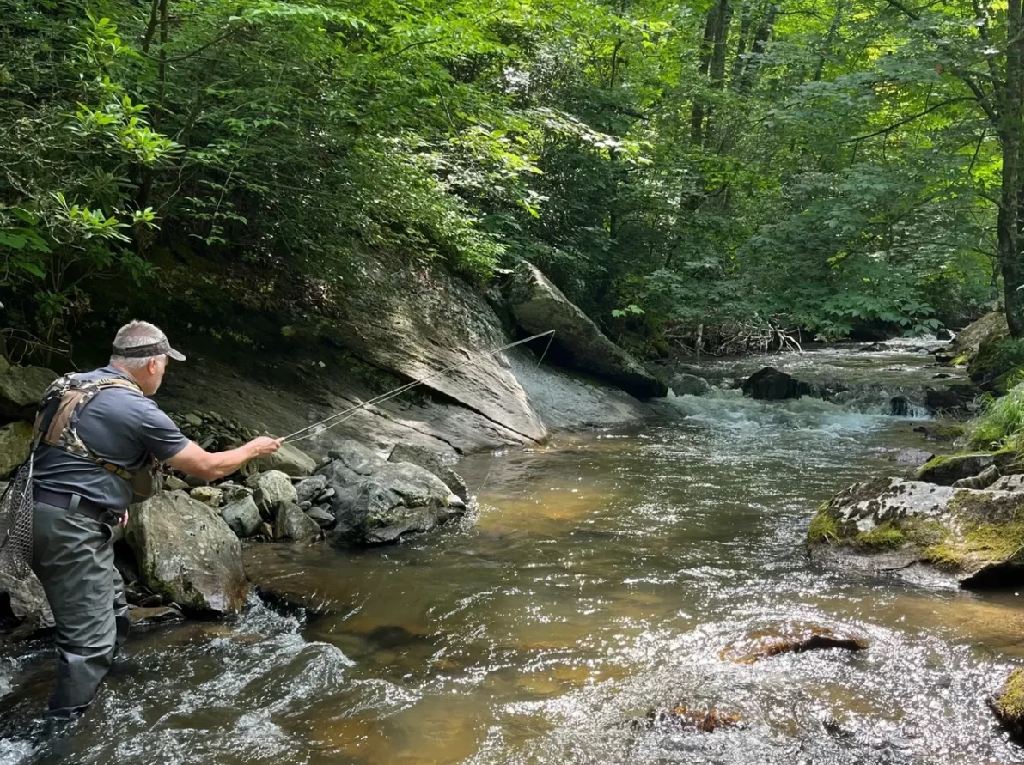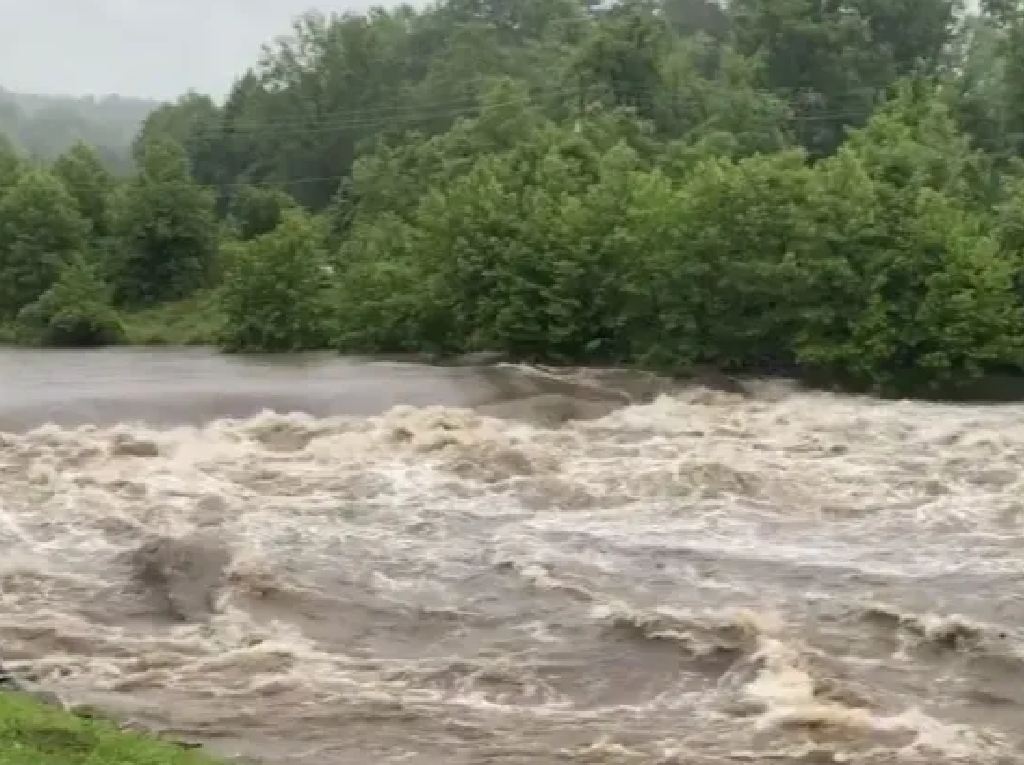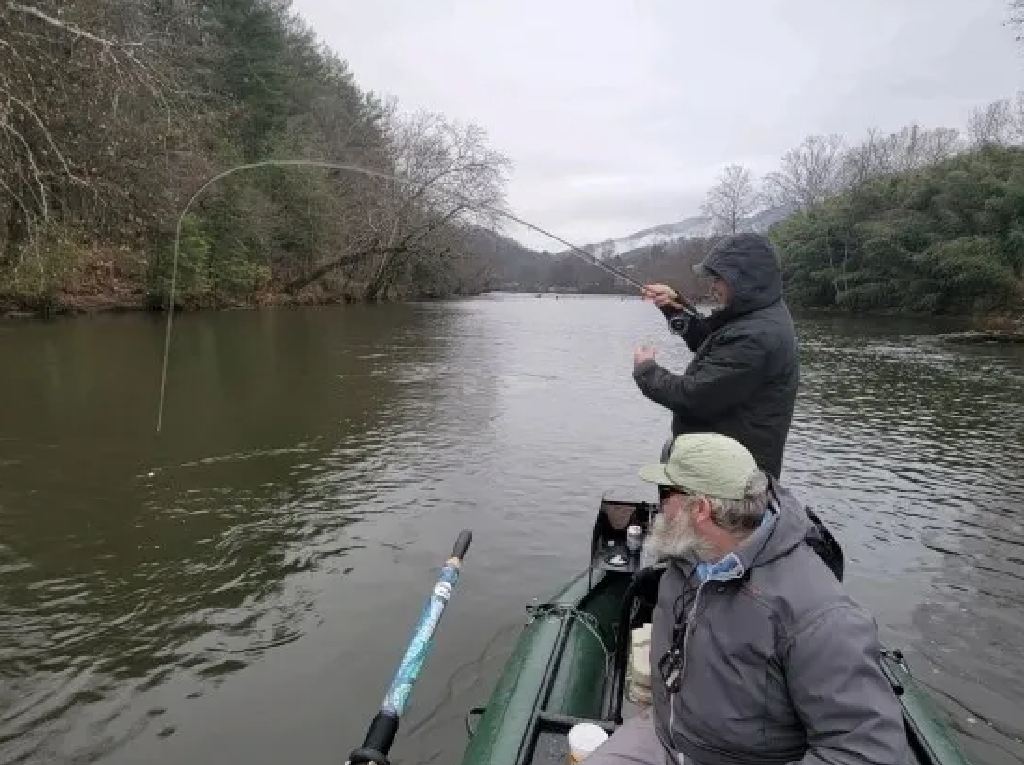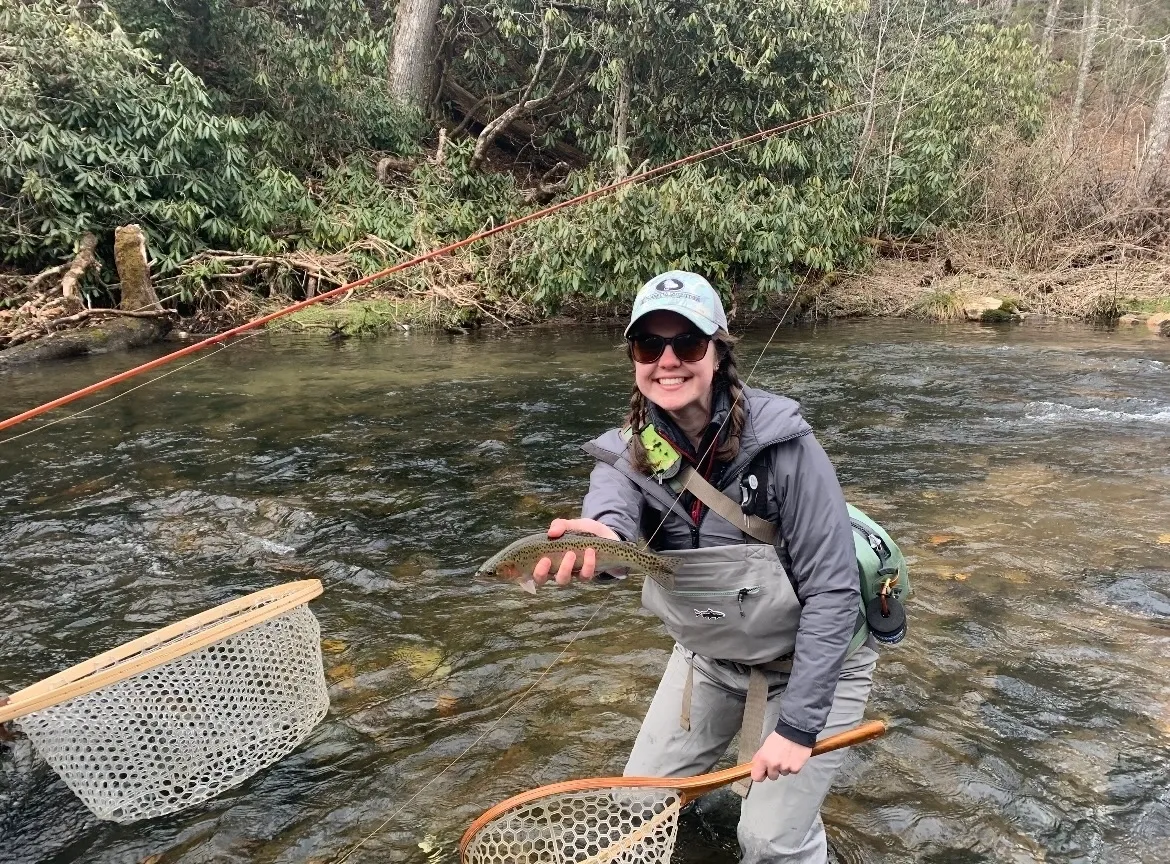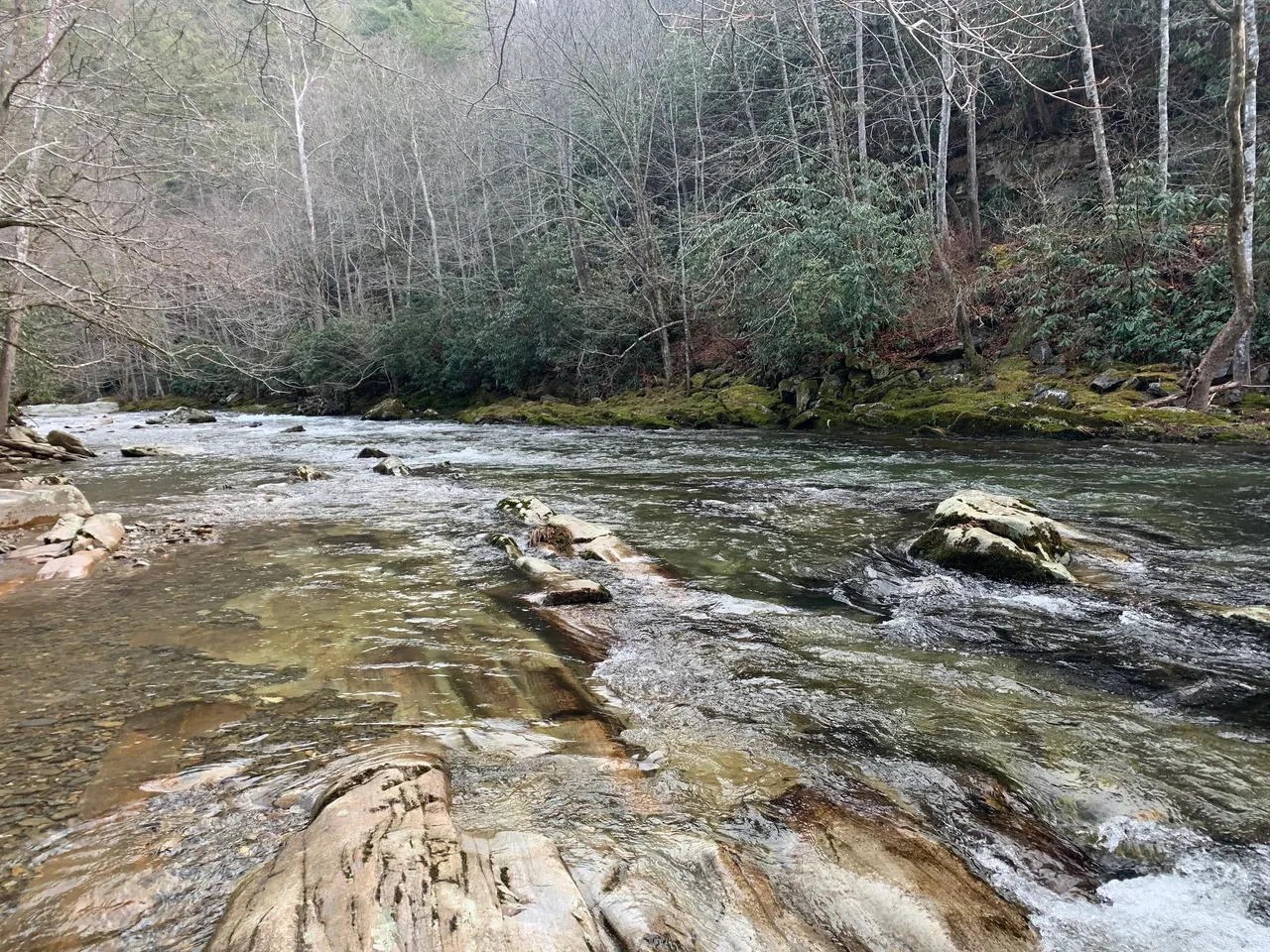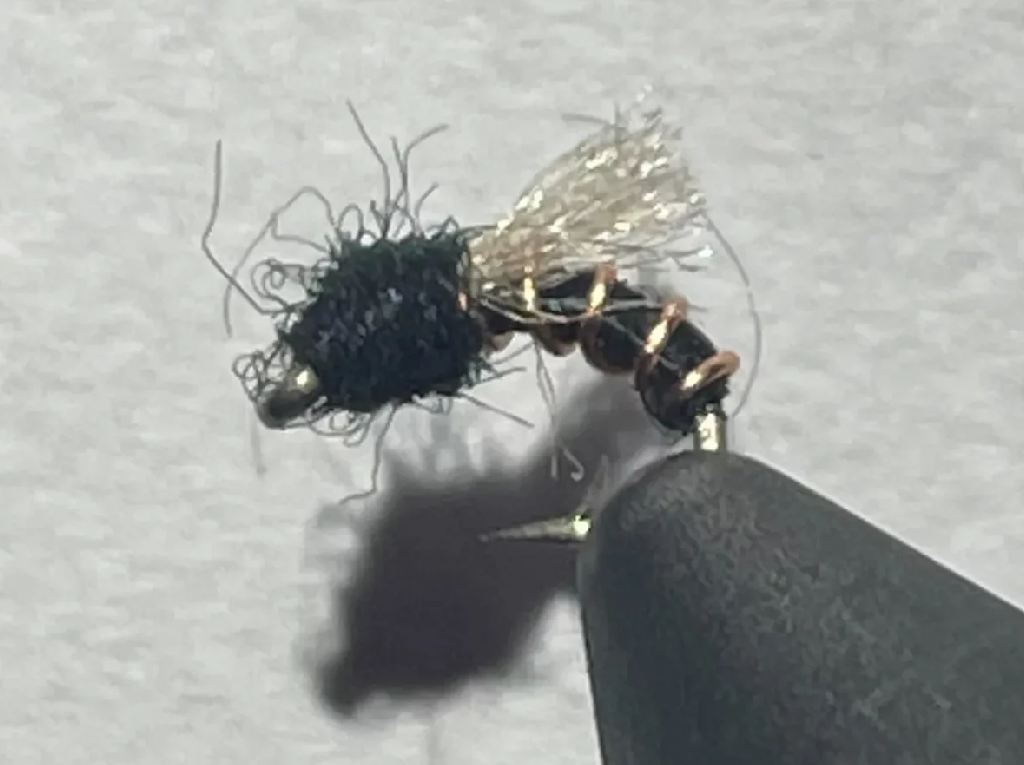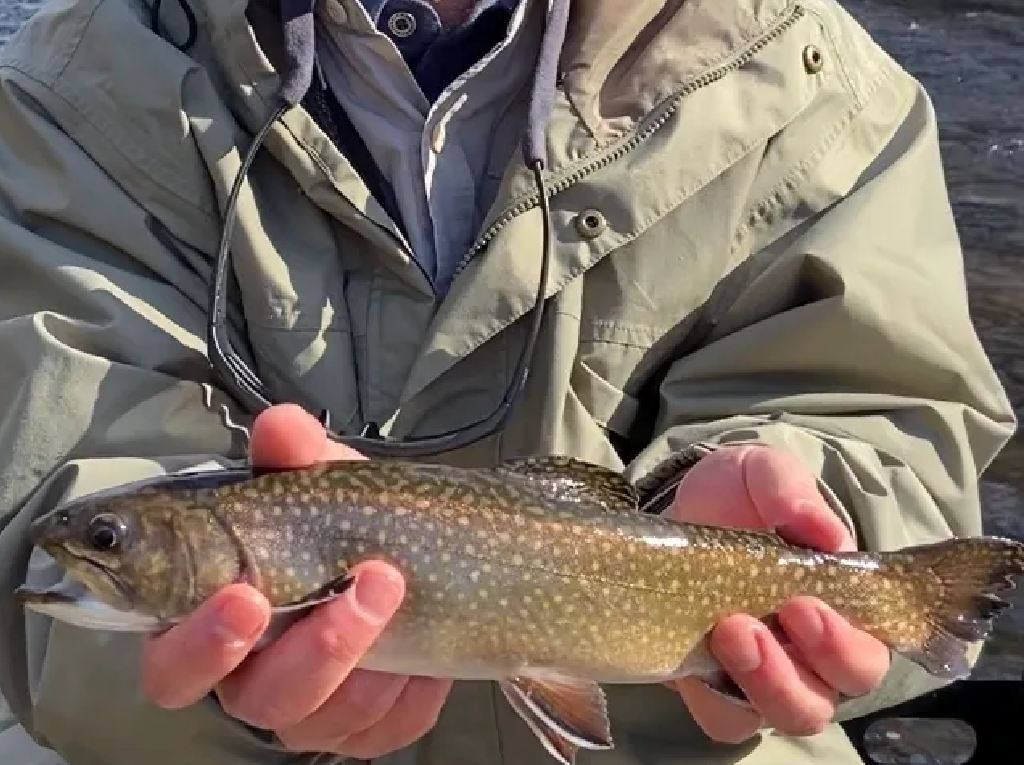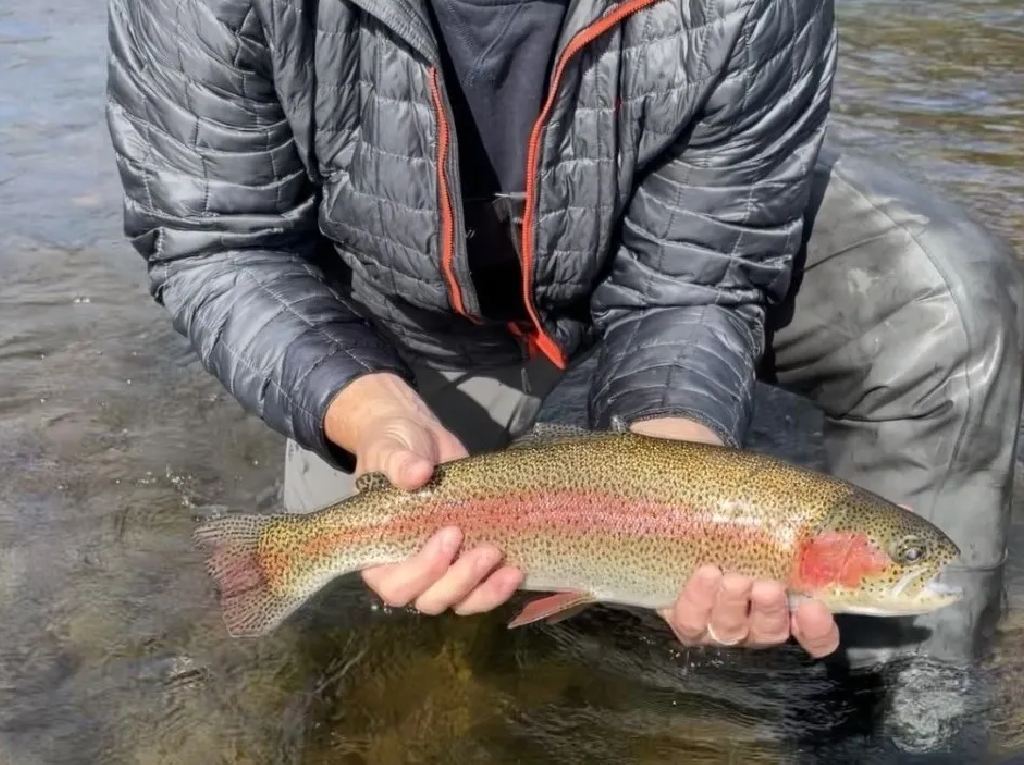Big Trout. Everyone wants to catch them.
Catching big trout is more akin to big game hunting than fishing. You need big guns and unlimited patience. It’s a long slog, but the payoff is huge. Most successful hunters that target large prey use substantial firepower. Occasionally, you’ll find a sharpshooter that wants to carry a .243 instead of the devastating power of a .300 Win Mag. Depending on your skill level, the right tool is always subjective. It goes the same way with targeting large trout. Let’s get down to the nitty-gritty.
Rods
Most anglers that fish streamers often prefer to cast rods that are effective at casting heavy flies, heavy sinking lines, and fighting heavy fish. These rods are usually in the 6-8wt range. The 6wt rods are very effective at casting sink tips, which are looped into the head of a floating line. However, the 6wt is not very efficient at casting large flies or full sinking lines. The power is simply not there. It’s a great tool for wide, shallow bodies of water that don’t have many obstructions for the fish to get tangled in. In the right hands and the right kind of water, it can be a deadly tool. 7 & 8wt rods are much more capable of tossing full sinking lines and flies that would truly count as a full meal. Personally, I prefer the versatility of the 8wt. I can throw the highest density full sink lines that are reasonable for trout fishing. I can also throw some seriously heavy flies. The 8wt has the power reserves to turn the largest of trout, but trout in the 14” range can still be a lot of fun. One of the things I like best about the 8wt, is that I can cast heavy lines and flies without feeling fatigued at the end of the day. Windy conditions? Tis but a breath of fresh air… One last super crucial benefit of the 7’s or 8’s is the ability to cross over into the saltwater, bass, and pike realms. They are the most commonly used rod weights for inshore anglers.
Reels
When thinking of trout, most anglers don’t think of these fish making blistering runs of 100 yards. It’s not that the fish aren’t capable, it’s just not typical of their behavior. It can happen, but it’s very rare. Having a backing capacity of at least 100 yards is always a good idea when targeting any fish. In the Tuckasegee River, where we do most of our streamer fishing, you will primarily catch trout, but there is always a possibility that you could find a muskie, carp, smallmouth bass, or even a large catfish at the end of your line. Backing is very important, especially when wading. You never know when that legendary 30” rainbow that came out of the lake will make an appearance, and if you’re on foot, you can be at a disadvantage. Having that extra line capacity can save the day. Drag systems are not as important. Fancy drag systems are made to dissipate heat from long, hard runs from fish that never seem to tire. Trout are not those fish. But… that 7 or 8wt outfit may make it into the saltwater realm one day to target bonefish. In short, get a reel with a decent drag system that can tackle it all. Large arbor spools are important, too. Per crank, large arbor spools pick up far more line than a standard arbor can. The drag systems also maintain a more consistent level of pressure over standard arbors. As line comes off of a standard arbor spool, the diameter of available line decreases and the amount of drag pressure increases. As a fish takes out line, most anglers want to tighten their drag. This is a huge no-no. The less line on the spool equates to more and more drag pressure. In essence, let the reel and drag systems do their job. When you set your drag, leave it alone. More simply- set it and forget it.
Lines and Leaders
There are two primary options with regard to fishing streamers. Most anglers that fish sinking fly lines buy whatever they see on the shelf at their local fly shop. A lot of the time, that means they’re buying a floating fly line with a tip that is usually 10-30′ long and is tungsten impregnated. That works pretty well, but it’s money that is not well spent. Why buy a floating fly line with a sinking tip when you can buy a “poly leader” that you can loop onto the end of the presumably floating line you use for everything else?
Poly Leaders
These are the most economical way to fish your streamers in shallow to moderately deep water. Convenience is the key here. Poly Leaders can easily be attached to your existing fly line by looping the leader to the end of your fly line. Many fly lines available today have welded loops on the ends that you can attach a tapered leader to. If your fly line has a section of hard monofilament secured with a nail knot, these sinking leaders can be attached there, as well. If you can, purchase them all. You never know when you’ll be in 2’ of water in one section of the river, and an 8’ pool in the next. If you can only choose one, try the “Fast Sinking.” It will be the most versatile. Most fly line companies have good offerings, though I’m convinced all of these tips are made in the same factory overseas. I’ve never been to a fly shop that didn’t carry them.
Tips can usually be found in lengths of 7’ or 10’, and can be of varying densities classified as sinking in inches per second or IPS. These densities are most common-
Intermediate- 1-2″ per second (depths to 2’)
Slow Sinking- 2-3″ per second (depths to 3’)
Fast Sinking- 4-5″ per second (depths to 4’)
Super-Fast Sinking- 6-8″ per second (depths to 6’+)
Full Sinking Fly Lines
These are the die-hard streamer junkies’ bread and butter. These lines are made in different densities like the poly leaders, and have three basic running lines- floating, intermediate, or full sink. Purchasing the correct grain weight (gr) for your rod is crucial. For an 8wt rod, a grain weight of 200-300gr is perfect. Trying to throw a 500gr line on an 8wt rod is a recipe for disaster.
Sink tip/Floating Running Line- These lines usually have a 30’ sinking tip that can help you get down deep, but can limit depth with the floating running line. These lines can also be less sensitive and hard to get a good hook set due to the curve of the line with the floating line sitting on the surface and the tip down deep. They work, but in my opinion, not as well as the other two options.
Full Sink- These lines are exactly what they say, full sinking. The entire line is made with the same exact density for its entire length. For extremely deep water, they are great, except for one minor flaw. The curve you get with the floating/sink tip lines is inverted, so you can still lack sensitivity and hook setting abilities. These lines are not for the faint hearted. The term “Chuck N Duck” is founded on these lines. False casting these lines will result in getting whipped or taking a heavily weighted fly to the back of the head, unless you “duck” quickly. It only takes one solid hit to the head to make you consider why you’re casting this type of line.
Fast Sink tip/Intermediate Running Line- These are by far the most useful tool in the streamer angler’s kit. Uniform sinking throughout the entire line is its key to success. They have an intermediate running line with a 30’ fast sinking tip. This translates to a line that goes down in the water column in nearly a straight line, which provides crucial sensitivity and bone jarring hook sets. You will feel everything the moment you start stripping line in. If a fish blows a bubble on your line, you will know it. However, this is not the type of line you want to fish slowly in water less than 3’ of depth. It just too heavy. My preferred line is the “Scientific Anglers Sonar Titan in the Int/Sink 3/Sink 5.” It is the perfect streamer line.
Leader Setup is extremely simple. Around 3’ of 0x-3x tippet is all that is needed. Leave the 9’ tapered leaders in your pack for the dry flies and nymphs. The reason for the short length is to maintain contact with your flies. The longer the leader, the more curve will develop between your line and your fly. More curve means less action. Turning over heavy flies on heavy lines with a long leader is tough. It also puts you into that “Chuck N Duck” danger zone.
Casting
Casting sinking lines is an art. Or a nightmare. Doing a lot of false casting can cause all sorts of headaches, both figuratively and literally. The best technique I’ve found is as follows-
Strip out the amount of line you want to fish and slowly feed out the first 20′ of line with a poly leader, or the first 30′ of a full sink line. Straighten the line out with a couple of roll casts and let it settle. When you’re ready to make a distance cast, roll cast the line and the fly up to the surface. Once everything is up close to the surface, make one normal back cast, hauling if you can, and then release everything on the forward cast. When done properly, you can easily cast the entire length of the fly line if you want. Sinking lines laugh at wind, but you still don’t want to cast with the wind blowing on your casting side. If it seems like it will blow the line into you, turn your body so that your back cast becomes your forward cast. Basically casting off of your opposite shoulder. No need to switch hands.
Flies
Fly selection can always be a bear when streamer fishing. It’s not as easy as “matching the hatch.” Sometimes you can’t be sure about what they’re eating. Will they want darker flies or lighter colors or earthy tones? Do they want something big like a #2 Dolly Llama, or something smaller like a #8 Sculpzilla? Sometimes you have to cycle through the box and poke around until you find something that works. If the water is really dingy to muddy, go for something big and super flashy, or my favorite, all black. Black is my go-to color on any occasion. I have never spent a day streamer fishing when black didn’t work. The old adage- bright skies, bright colors; dark skies, dark colors is not always true. But sometimes it is. Spend about 30 minutes per color until you start getting some action.
Strategy
Big fish don’t get that way by working hard, they get big by being lazy and territorial. They have the mindset of maximum calories with minimal effort. If they can move other fish out of their area through aggression, they will be in the best position to eat the food of their choosing. This is why I fish streamers low and slow. I want to be in the big guys faces and I want to stay there. The longer our flies stay in that “nuisance” zone, the better. There are times when a fast retrieve will illicit strikes from a predatory aspect, but they’re not as common. Put yourself in the mindset of a trout- if a stranger walked into your house and started scoping out your snacks, you would be mad, too. I don’t know about you, but I would be hell-bent on destruction. Sometimes, it’s a matter of food miraculously appearing when they’re hungry. Either way, low and slow is how you’re going to get the most action. 1-2″ strips, with a stop and start retrieve will always get the job done. Sure, you will lose some of those expensive, blinged-out flies to rocks and other obstructions, but it’s the price you pay for success. The good part about streamer fishing is that it always works. Especially when the water is high and off color. Big fish like to come out and play when the conditions are cruddy for other forms of fly fishing. Successful streamer fishing is measured in length, not numbers.
Now that you have an idea of the gear you need, and the tactics to win, GET OUT THERE!!! Better yet, book a trip with us so you can get one-on-one instruction to set your streamer game on fire.


